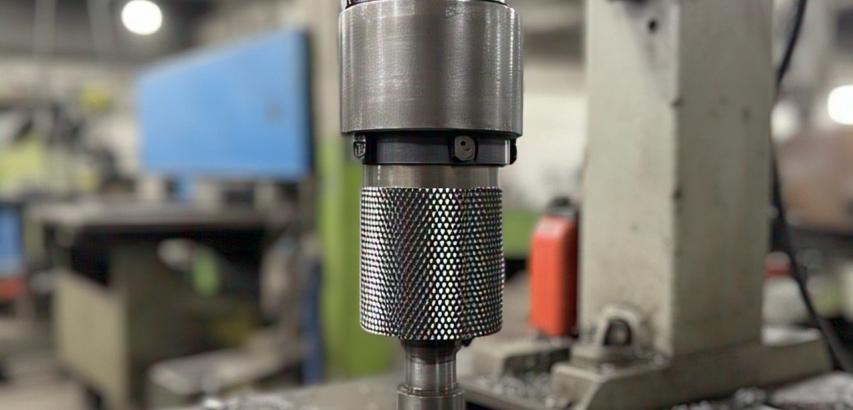A metal knurling machine is a specialized tool used to imprint precise patterns onto metal surfaces, enhancing grip, aesthetics, or functionality. This mechanical process deforms the material to create raised or recessed textures, such as straight, diagonal, or diamond-shaped patterns.
How It Works
Process: The workpiece (e.g., a cylindrical rod) is rotated in a lathe or CNC machine. A knurling tool with hardened steel rollers is pressed against the rotating surface. The rollers, engraved with the inverse pattern, displace or cut into the metal to form the desired texture.
Tool Types:
Form Knurling: Displaces material without cutting, ideal for softer metals.
Cut Knurling: Removes material for sharper patterns on harder metals.
Knurling Patterns
Straight: Parallel lines for linear grip.
Diagonal: Angled lines for directional grip.
Diamond: Crosshatched pattern (most common) for multidirectional grip.
Custom: Brand-specific or geometric designs for specialized applications.
Applications
Automotive: Gearshift knobs, handbrake handles.
Tools: Screwdriver handles, wrenches.
Medical: Surgical instruments, prosthetics.
Consumer Goods: Camera dials, jewelry, and decorative hardware.
Materials
Suitable for metals like steel, aluminum, brass, and titanium.
Also used on plastics (e.g., polymer grips).
Material hardness influences tool selection (e.g., carbide tools for hardened steel).
Types of Knurling Machines
Manual Lathe-Mounted Tools: For small workshops or hobbyists.
CNC Knurling Machines: Automated, high-precision systems for industrial production.
Hydraulic/Pneumatic Presses: For heavy-duty applications.
Key Considerations
Pitch: Distance between pattern ridges (fine vs. coarse).
Workpiece Diameter: Affects roller alignment and pressure.
Pressure Control: Critical to avoid material cracking or tool wear.
Advantages
Durability: Patterns withstand wear and tear.
Functionality: Improves grip in mechanical assemblies.
Versatility: Applicable to cylindrical, flat, or conical surfaces.
Maintenance and Safety
Tool Care: Regularly sharpen and lubricate rollers.
Alignment: Ensure precise tool positioning to prevent uneven patterns.
Safety: Secure workpieces, use protective gear, and follow speed/feed guidelines.
Challenges and Solutions
Springback: Compensate by over-pressing softer metals.
Tool Slippage: Use rigid tool holders and proper clamping.
Material Hardness: Opt for cut knurling on brittle alloys.
Emerging Trends
CNC Integration: Enables complex patterns and repeatability.
Laser Knurling: Non-contact method for delicate materials.
Hybrid Systems: Combine knurling with milling or turning for multifunctional machining.
Comparison with Other Techniques
Etching/Engraving: Decorative but less durable.
Knurling: Offers functional texture without material removal (in form knurling).
Metal knurling machines bridge functionality and design, transforming raw metal into ergonomic and visually appealing components. Whether for industrial manufacturing or custom craftsmanship, understanding tool selection, material behavior, and operational best practices ensures optimal results. As technology evolves, innovations like CNC precision and hybrid systems continue to expand knurling’s applications in modern engineering.
Example Products:
Adjustable wrenches with diamond knurling for slip resistance.
Custom-branded knobs for machinery controls.
Aerospace components requiring non-slip surfaces.
By mastering knurling techniques, industries enhance both performance and user experience in countless mechanical systems. 🛠️🔩
 |  |  |
